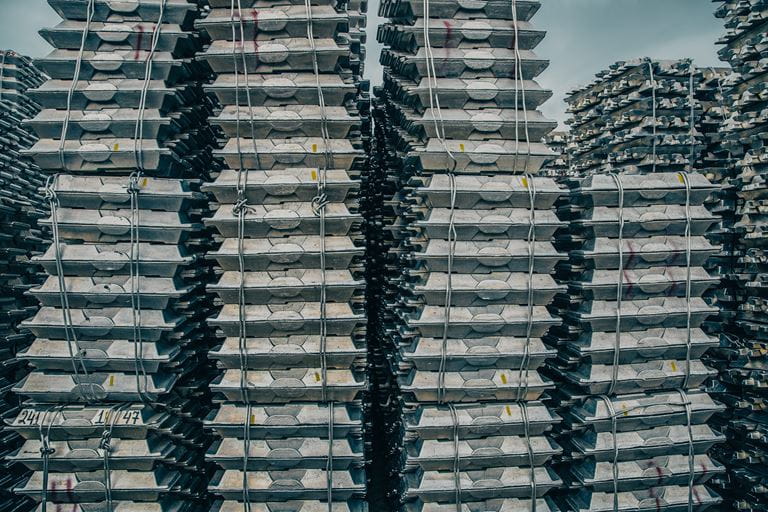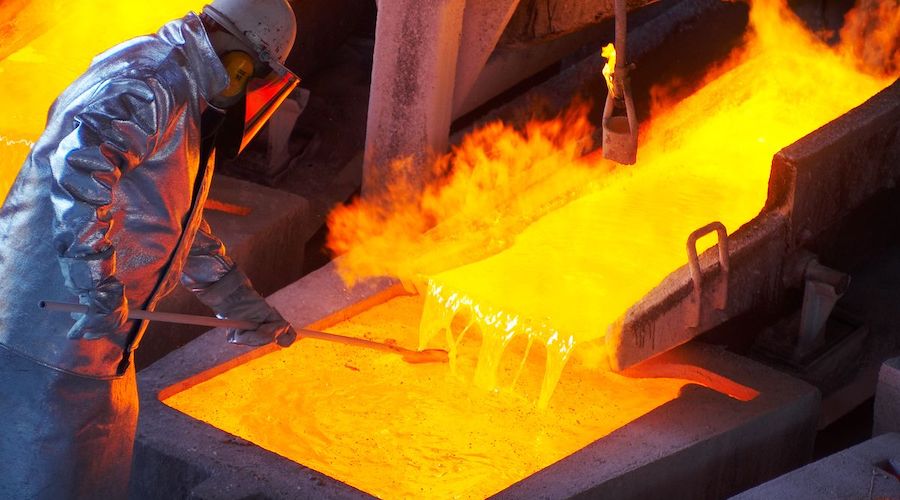Column: LME checks Russian aluminum play but is it game over?

The London Metal Exchange’s (LME) warning shot to those looking to game the new sanctions on Russian aluminum appears to have worked, for now at least.
Traders swooped on the LME’s stocks of Russian brand aluminum after the US and UK governments banned exchanges from taking delivery of Russian metal produced after April 12.
Over half of registered tonnage was cancelled over the ensuing week, destined for a creative run-around that would see it re-warranted under more restrictive trading conditions and locked into a lucrative rent-sharing warehouse deal.
A significant amount of that cancelled stock was moved back onto LME warrant last week after the exchange tweaked its new rules around Russian metal delivery.
The physical liquidity boost has calmed time-spreads, the benchmark cash-to-three-months period returning to contango.
Crisis averted, although it remains to be seen whether there are more twists in the LME’s long-running Russian aluminum story.
The exchange is fortunate that physical buyers, particularly Chinese players, are still more than happy to soak up excess Russian metal.
The Gwangyang shuffle
The LME stocks raid was concentrated on the South Korean port of Gwangyang, where 109,125 metric tons of aluminum inventory were cancelled over the week of April 15, including a massive 79,850 tons on April 15 itself.
Over 90% of all LME warrants were Russian-brand metal at the end of March and much of it has been sitting in Gwangyang, which holds around half of all registered inventory.
Such warrants, already on exchange at the time of the sanctions announcement, can be freely traded. Taken off-warrant and delivered back to the LME, they would have come with restrictions on UK and US citizens or entities being able to cancel them anew or take physical delivery.
Likely stuck in the LME system for a lengthy period, the metal would have generated a revenue stream for the warehouse operator and, via a rental-share agreement, with the entity re-warranting it.
The LME has moved to close the potential loop-hole by making it much easier to convert re-warranted Russian metal back to its original free-trade status.
The exchange has also reminded warehouse operators that rent-sharing deals aren’t allowed if they serve to restrict future owners’ ability to take physical delivery, which seems to have been the premise of this particular storage play.
The regulatory reminder appears to have had an impact with 88,625 tons of aluminum re-warranted at Gwangyang on May 1.
Game over?
This may not be the end of the LME’s Russian aluminum saga, which has been running since Russia’s full-scale invasion of Ukraine in 2022.
The latest sanctions package, drawing a line between metal produced before and after April 13, will lift the pressure on the exchange to make its own call on banning Russian aluminum.
But there still seems to be a lot of metal on the move. Excluding the Gwangyang shuffle, there have been almost 106,000 tons of net new cancellations since April 12.
Is this non-Russian metal being snatched up? Or has someone devised another way of gaming the new sanctions rules?
There is also the potential for Russian metal that was stored off market prior to April 13 to gravitate to LME storage, something the exchange itself said was a potential outcome.
So far this hasn’t happened but what the LME calls “off-warrant” stocks of inventory were a substantial 737,000 tons at the end of February, according to the most recent monthly exchange update.
Given that Russia’s Rusal is such a big producer with sales of 4.2 million tons in 2023, at least some of this shadow stock is likely Russian metal.
Chinese imports
The LME is fortunate that although the United States has now banned all imports and many Western consumers are self-sanctioning, Russian aluminum is still finding a physical home.
China in particular is soaking up what the West won’t buy.
The country imported 1.2 million tons of Russian primary aluminum last year, up from 462,000 in 2022. Indeed, Russian metal accounted for three quarters of total imports.
The flow has continued into the first quarter of this year. Russian imports totalled 392,000 tons, matching the pace of the previous two quarters.
Although China is the world’s largest producer of primary aluminum, its huge smelter network is now running up against the government’s capacity cap of 45 million tons.
With limited scope to build new smelters, other than to replace older capacity, the country looks capable of absorbing a growing amount of imported Russian metal. Rusal’s output is low-carbon aluminum produced from Siberian hydro-power, likely making it attractive as a source of raw material for China’s products manufacturers.
China’s appetite for Russian metal offers a market outlet for both new production and older production that might otherwise gravitate towards LME storage.
However, it remains to be seen whether that will prevent more shuffles of the LME’s Russian aluminum pack.
(The opinions expressed here are those of the author, Andy Home, a columnist for Reuters.)
(Editing by Mark Potter)
{{ commodity.name }}
{{ post.title }}
{{ post.date }}

Comments